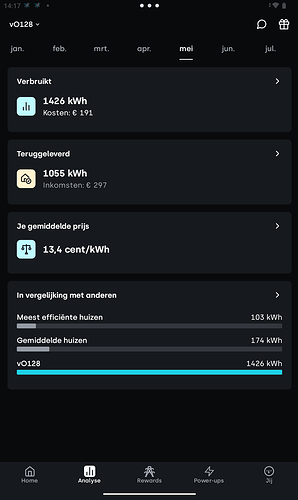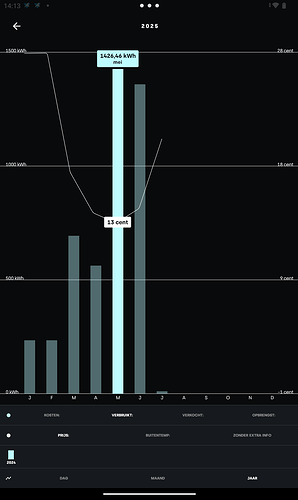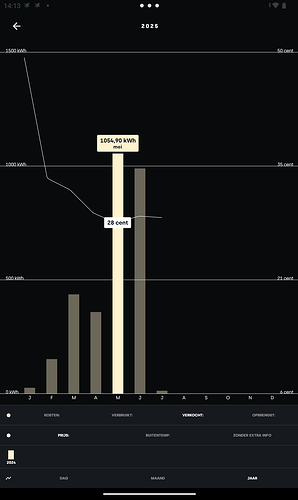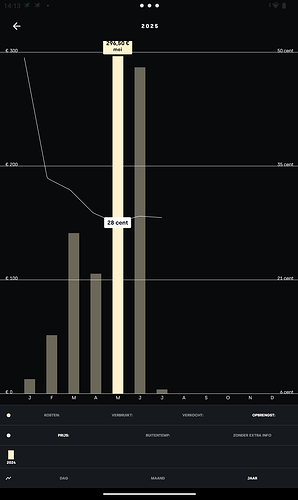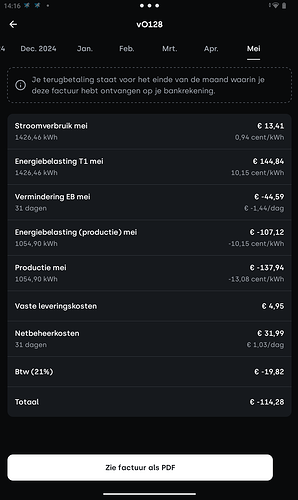If you want, I propose we do an experiment setting up your system in DESS Trade mode first and get that behaving properly. That way most of the Green mode complexity won’t get in the way of understanding what is going on. Then we add the PFCO to that to get your batteries working for your you, and only thereafter we reenable Green mode to see what the difference is about and see whether all extra (Green mode) complexity is adding any practical value in practice, or not.
When does your dynamic pricing contract start?
PS, can you give some estimates of your dayly/monthly power stats: grid import and export, solar production, self consumption. I assume that may be quite different then our system where our self consumption is dwarfed by the trading volume and solar is absent completely. To give you an idea of what we did on a single phase 35A ‘smeltzekering’ with a single MP II 5000 and a separate boost charger to up the maximum charge power right up to the fuses limits (a little over actually, 39Amp (230Vac) continuous on full power.:
That was may, juni is just like it. Roughly 1350kWh bought, 1000kWh sold, the difference 350kWh is more heat losses than self consumption I think. Still over €100 payout on say 1000kWh cycled gives a nice 10ct/kWh to compensate battery cost and leave some on the table still, not to mention no cost for heating and self consumption.
The real opportunity lies in adding just enough solar to this system to recoup all the taxes payed, that would be the optimum profitability case.
And arguably: still very green because our system buys the surplus solar production from the neighbours so to say.
Biggest difference to your system is our battery capacity of 70kWh useable dayly, but as seen from the data only 35 - 45kWh is cycled dayly, with good tuning you should be able to get reasonably close to that, upto double if adding more capacity in the future. And capacity cost will keep going down I believe so that might be quite interesting for the future for you.
